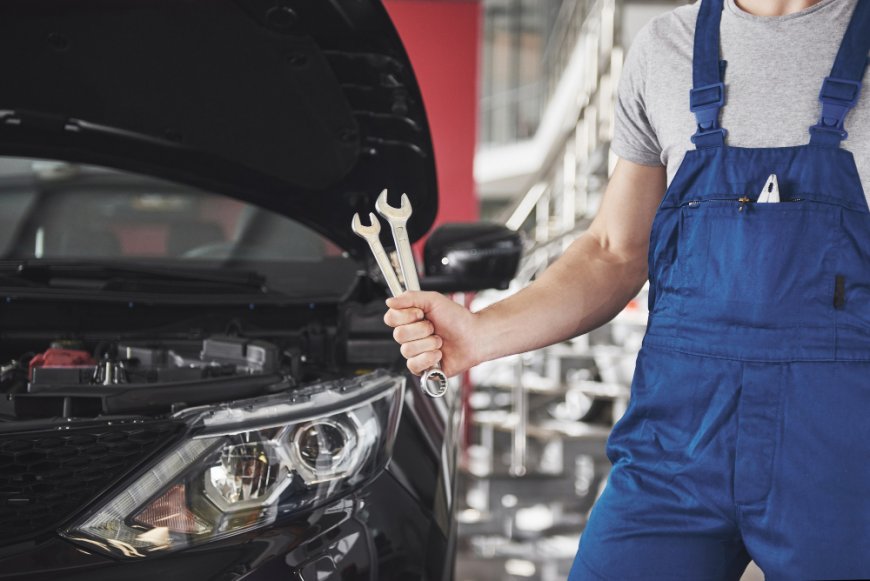Step-by-Step Car Repair Tips for Beginners
. Investing in sturdy tools is essential, especially if you plan on doing regular car repairs over the long term.

Have you ever popped the bonnet of your car and felt both curious and overwhelmed? Perhaps you’ve wondered if you really need to pay someone else to replace your oil or air filters. If you’ve been asking yourself these questions, you’re not alone. Many beginners feel nervous about rolling up their sleeves and getting stuck into even the simplest car repairs.
We’ll cover everything from essential tools to routine maintenance, and we’ll even talk about when it’s best to call a professional for help. Think of this as your personal roadmap to keeping your ride in good shape. By the end of this guide, you’ll understand how to handle low-hanging fruit repairs (like changing an air filter) and more achievable fixes (like swapping out brake pads). You’ll also discover top questions people ask, practical safety tips, and cost comparisons between doing it yourself and visiting a workshop. Ready to dive in? Let’s begin!
Essential Tools and Safety Measures
Wanting to tackle car repairs is great, but you’ll need a solid set of tools and a focus on safety. After all, even the simplest DIY task can lead to trouble if you’re not equipped and protected. Let’s look at the core items you should have in your garage before you start turning any bolts.
Basic Toolkit: Wrenches, Screwdrivers, and More
Other helpful tools include pliers, a set of Allen keys, and a car jack with sturdy jack stands. If you’re looking at “low-hanging fruit keywords” in car maintenance, these basics can handle tasks that bring you fast results without a huge learning curve.
Safety Gear: Gloves, Goggles, and Protective Clothing
Safety is non-negotiable. Always wear protective gloves to keep your hands safe from chemicals, grime, and hot surfaces. Eye protection is also crucial, especially if you’re dealing with brake dust, metal shards, or engine fluids that could spray unexpectedly. Wearing clothes that cover your arms and legs can protect your skin, and closed-toe shoes are essential. Remember, your safety gear doesn’t have to be expensive but it does need to be suitable for automotive work and durable enough to last.
Achievable Difficulty Repairs
Worn brake pads can seriously compromise your safety. Before starting, be certain you have a reliable jack, jack stands, and the correct brake pads for your car. Removing the wheel exposes the brake caliper, which holds the pads in place. You’ll need to compress the brake piston and slip in the new pads. Once done, pump the brake pedal a few times before driving to reposition the pads against the rotor. Always replace brake pads in pairs for consistent stopping power.
One crucial safety tip: never work on the hydraulic components without referencing your car’s service manual. Brake systems can be sensitive, and incorrect installation can be dangerous on the road.
Swapping Out a Car Battery
Is your engine taking too long to start, or do you see battery warning lights? It could be time for a battery replacement. First, make sure the engine and all electrical components are switched off. Disconnect the negative cable, then the positive, and carefully remove the old battery. Place the new battery in the tray, secure it, and reconnect the positive cable first, then the negative. Dispose of the old battery at a proper recycling facility or an auto parts store.
Commercial Intent Repairs
Sometimes you can handle the job on your own, and sometimes you can’t. If an issue involves critical components of your vehicle’s safety like brakes, steering, or major electrical parts—it might be smarter to consult an expert. Professionals near Castle Hill know the common local driving conditions and can advise you on region-specific wear and tear. Plus, if a repair needs specialised diagnostic equipment or advanced expertise, a professional workshop is equipped to handle it more effectively.
Cost-Effectiveness: DIY vs. Professional Services
DIY repairs can be cost-effective for simpler tasks, especially if you already have the tools. However, if you need to buy special equipment for a single repair, the total cost might exceed the price of a workshop visit. Weigh up factors like how much your time is worth, the complexity of the repair, and the risk of making a mistake. Sometimes, getting a pro to tackle a complex job saves money, frustration, and potential damage in the long run.
Step-by-Step Car Repair Process
It all begins with figuring out what’s wrong. Perhaps your car is making unusual noises, or certain warning lights are flashing on your dashboard. Start by reading the owner’s manual to see if it points you in the right direction. If not, use common sense and online forums: “top questions” about unusual rattles, squeaks, or leaks often lead to quick tips from people who’ve had the same issue. A quick scan under the bonnet can also reveal obvious problems like worn belts or cracked hoses.
Executing Repairs with Safety Precautions
With parts and tools ready, set up your workspace. Ensure the car is on level ground, engaged in park or in gear with the handbrake on, and supported by jack stands if you’re working underneath. Always wear safety gear (gloves, goggles, and closed-toe shoes), and keep a first aid kit nearby. Then, follow a step-by-step approach—remove the faulty part carefully, install the new one as per the instructions, and verify everything is secure before moving on.
Testing and Final Checks
After the repair, it’s time for verification. Start the engine, take the car for a short test drive, and see if the original issue has resolved. Keep an ear out for odd noises, check fluid levels again, and glance at your dashboard for any warning lights. If everything seems normal, you’ve achieved a successful DIY repair! If not, consult a professional or do further troubleshooting—sometimes more than one component can be at play.
Common Mistakes and Pitfalls
Even the most well-intentioned DIY mechanic can slip up. Whether it’s ignoring a warning sign or using the wrong tool, mistakes can be costly or even dangerous. Let’s talk about how to avoid some of the biggest pitfalls.
Poor Tool Selection and Inadequate Safety Measures
Grabbing the wrong size wrench to save time might seem harmless, but you could strip a bolt head and create more hassle. Investing in sturdy tools is essential, especially if you plan on doing regular car repairs over the long term. Inadequate safety measures like not wearing goggles while working on brake components can lead to injuries. A small lapse in judgement can have serious consequences.
Conclusion
Summing up, starting with basic car repairs isn’t as intimidating as it often seems. Small jobs like changing engine oil, swapping air filters, and checking spark plugs are fantastic “low-hanging fruit” that quickly boost your car’s performance. More involved tasks, such as replacing brake pads or diagnosing fluid leaks, require a little more knowledge but they’re still within reach for most beginners who do their homework.
Once you’ve got a handle on tools and safety measures, you’ll find that regular maintenance pays huge dividends. Rotating tyres, topping up or changing fluids, and following a structured, step-by-step repair process can all extend the life of your vehicle. If you’re in Castle Hill or anywhere in Australia, you also have easy access to certified mechanics should you need specialised help.
































































































































































